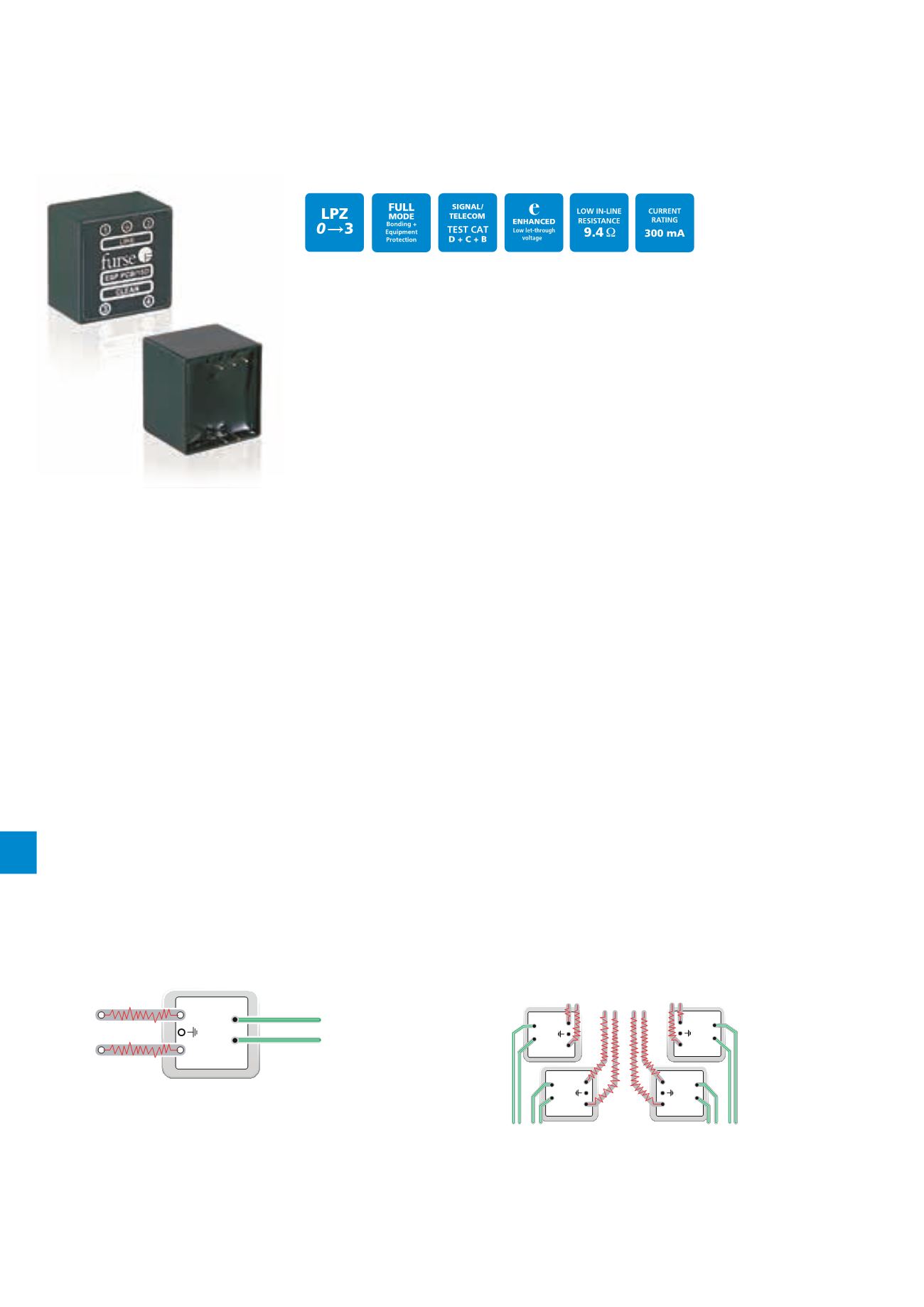

12/24
Total Solution to Earthing & Lightning Protection |
9AKK106354A3360
12
Combined Category D, C, B tested protector (to BS EN 61643) for ‘through
hole’ mounting directly onto the PCB of data communication, signal or
telephone equipment. Available for working voltages of up to 110 Volts. ESP
PCB/TN suitable for Broadband, POTS, dial-up, T1/E1, lease line and *DSL
telephone applications. For use at boundaries up to LPZ
0
to protect against
flashover (typically the service entrance location) through to LPZ 3 to protect
sensitive electronic equipment.
Data & signal protection
ESP PCB/D & PCB/TN Series
Installation
Connect in series, soldering pins direct onto PCB. Tracks to
line and earth pins should be as wide as practical (see Furse
Application Note AN003). Dirty (line) tracks should be routed
parallel and as close together as possible. This should also be
implemented on clean tracks, however clean tracks should
never be routed close and parallel to line tracks or dirty barrier
earth connections as transients can be re-introduced after the
protector due to electromagnetic coupling.
The use of an earth layer or plane is highly recommended as
this reduces the electromagnetic field produced by a transient
discharging to earth considerably, and hence the chance of
the transient being picked up on clean tracks.
Full product range order codes can be found on pages 17/8-17/9
Maximum line to clean separation. Large input
tracks and pads (using top and bottom copper
layers). Earth pin is bonded to an earth layer/plane.
Clean
1 3
4
2
Line
INE
CLEAN
All dirty (line) incoming tracks are separated from the
clean output tracks, individual line and clean tracks
are routed close together. Earth pins are bonded to an
earth layer/plane.
Line
Clean
Clean
3
4
3
4
1
2
1
2
ESP PCB/**
3
4
1
2
ESP PCB/**
1 3
4
2
CLEAN
CLEAN
LINE
Features & benefits
–– Suitable for wave soldering
–– Very low let-through voltage (enhanced protection
to IEC/BS EN 62305) between all lines - Full Mode
protection
–– Full Mode design capable of handling partial lightning
currents as well as allowing continual operation of
protected equipment
–– Repeated protection in lightning intense environments
–– Low in-line resistance minimizes unnecessary reductions
in signal strength
–– 2 pin clean end and 3 pin line end to ensure correct
insertion
–– ESP PCB/TN is suitable for telecommunication applications
in accordance with Telcordia and ANSI Standards
(see Application Note AN005)


















